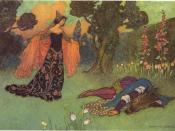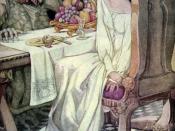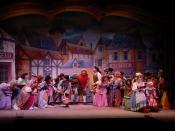Unlike most fairy tales, "Beauty and the Beast" has been a traditional tale where there are two paths to be developed in which Beauty faces challenges and the transformation that is sustained by Beast. Therefore, this shows how two opposing allegorical characters resolve their differences in joining wedlock. The version of "Beauty of the Beast" by Madame de Beaumont shows how Beauty's happiness is found on her abstract quality of good features. In this version, Madame de Beaumont not only stresses the importance of obedience and self-denial but advocates the transformative power of love and the importance of valuing oneself over appearances. Madame de Beaumont not only shows that looks make a woman happy but character, virtue, and kindness are significant, which all qualities, the Beast possess. The Grimm's' version, "Frog King, or Iron Heinrich" is similar to "Beauty and the Beast." The princess must accept an animal suitor since it helped her when she was in trouble.
In this version, it shows that the princess beheaded her suitor since she threw the frog against the wall. Therefore, the Grimm's' version shows that, even though the princess was ungrateful and cruel to the frog, in the end she got what she wanted, the prince.
In "The Frog Princess" by Alexander Afanasev, is a tale that is different from the "Beauty and the Beast" and "Frog King, or Iron Heinrich." It is about a woman appearance that is distorted instead of the man. When her skin was burned, the husband went to find his wife no matter what because he wanted to show his princess to the town and reunite with her. In the 1947 film "La Belle et la bête" by Jean Cocteau, it placed a strong importance on the wanted quality of a woman. On the other hand, in...



Great analysis
well written literary analysis of The Beauty and The Beast.
0 out of 0 people found this comment useful.